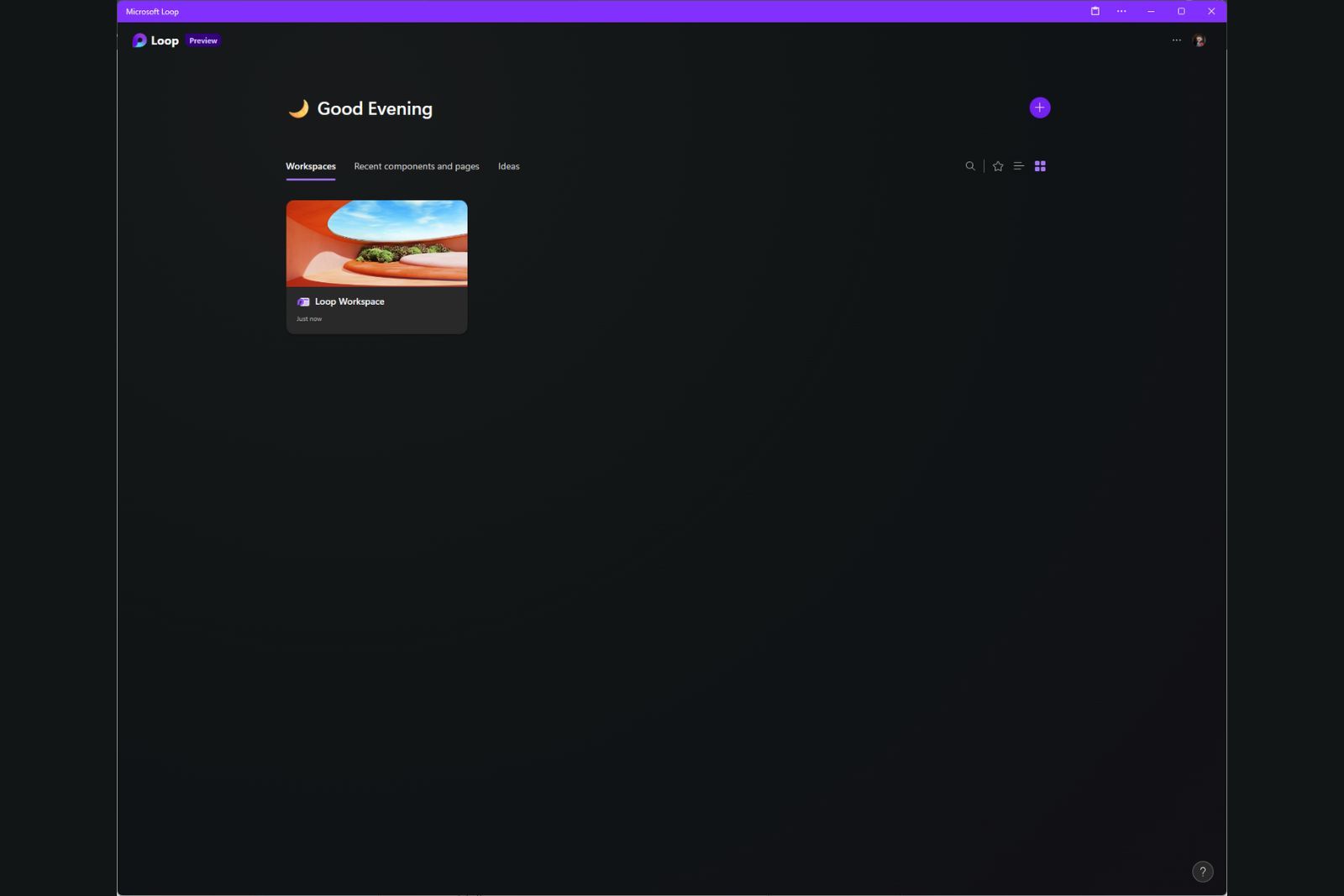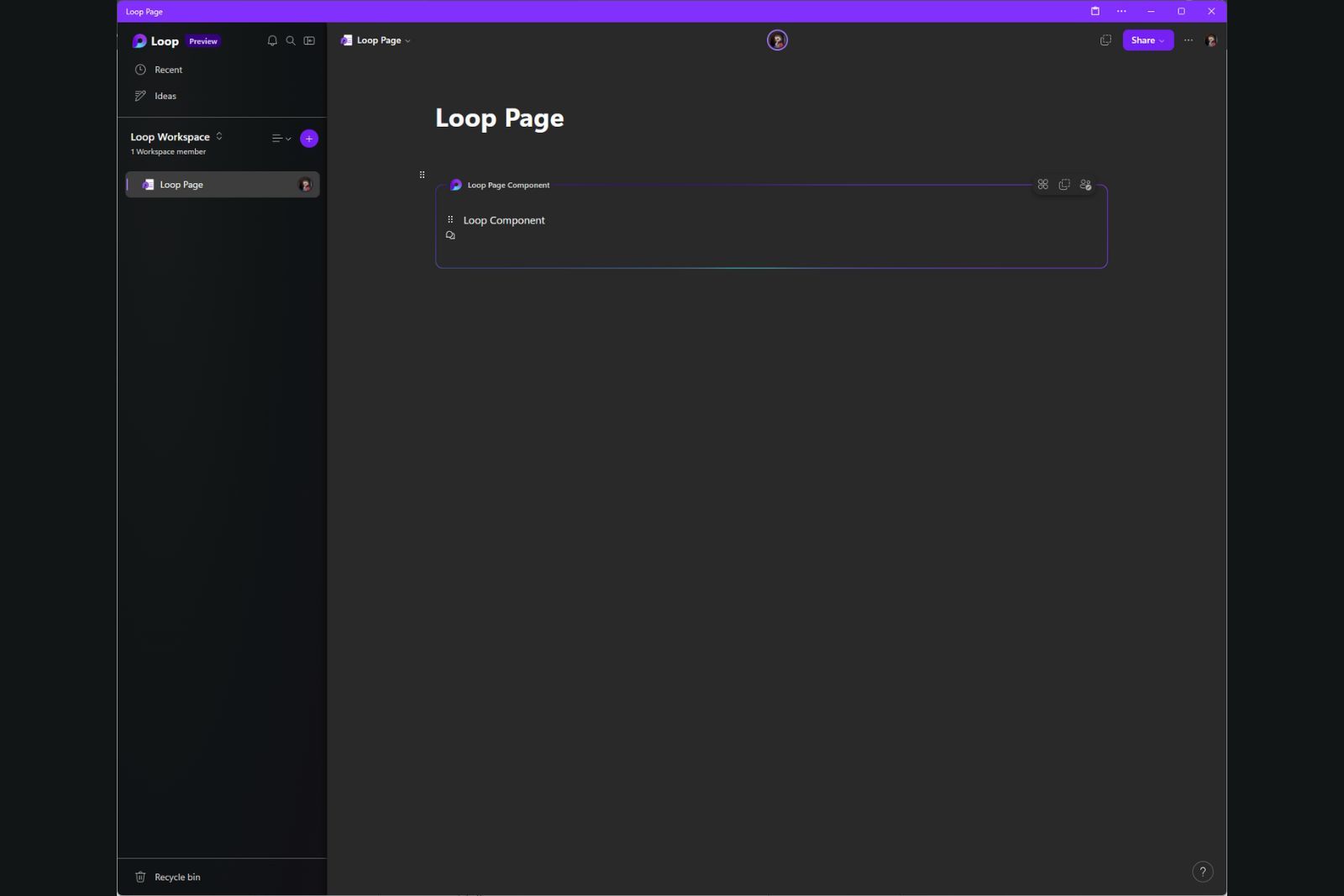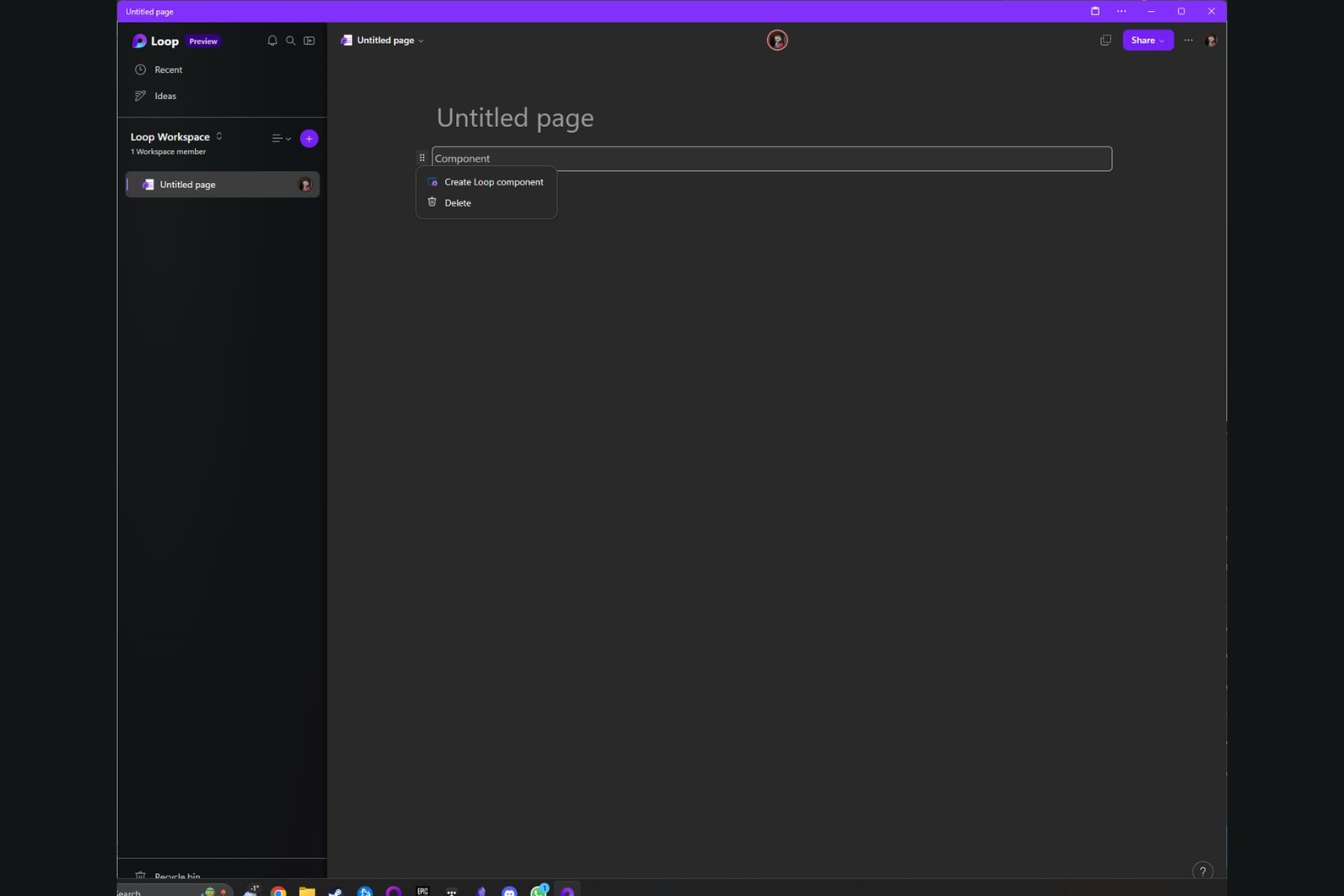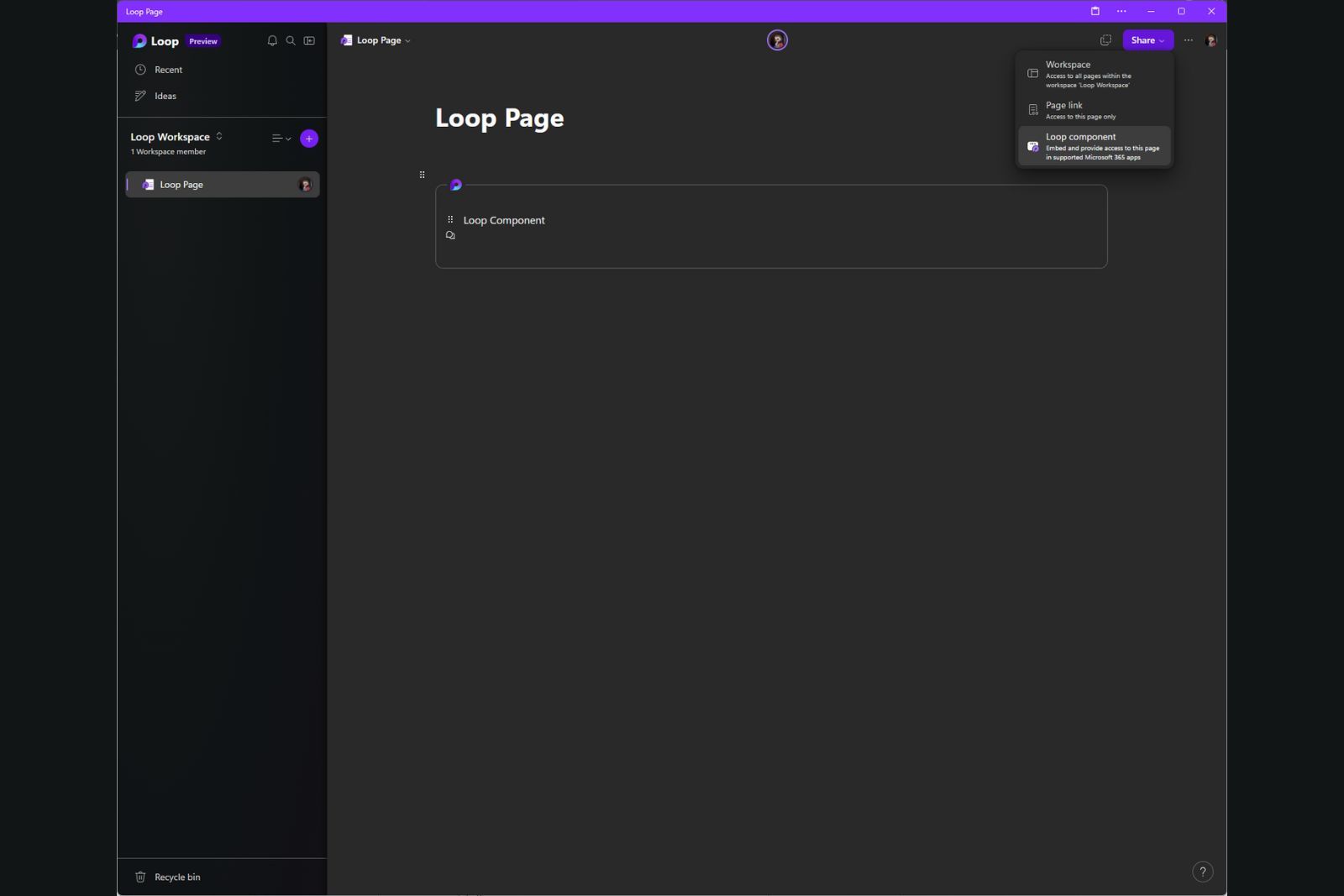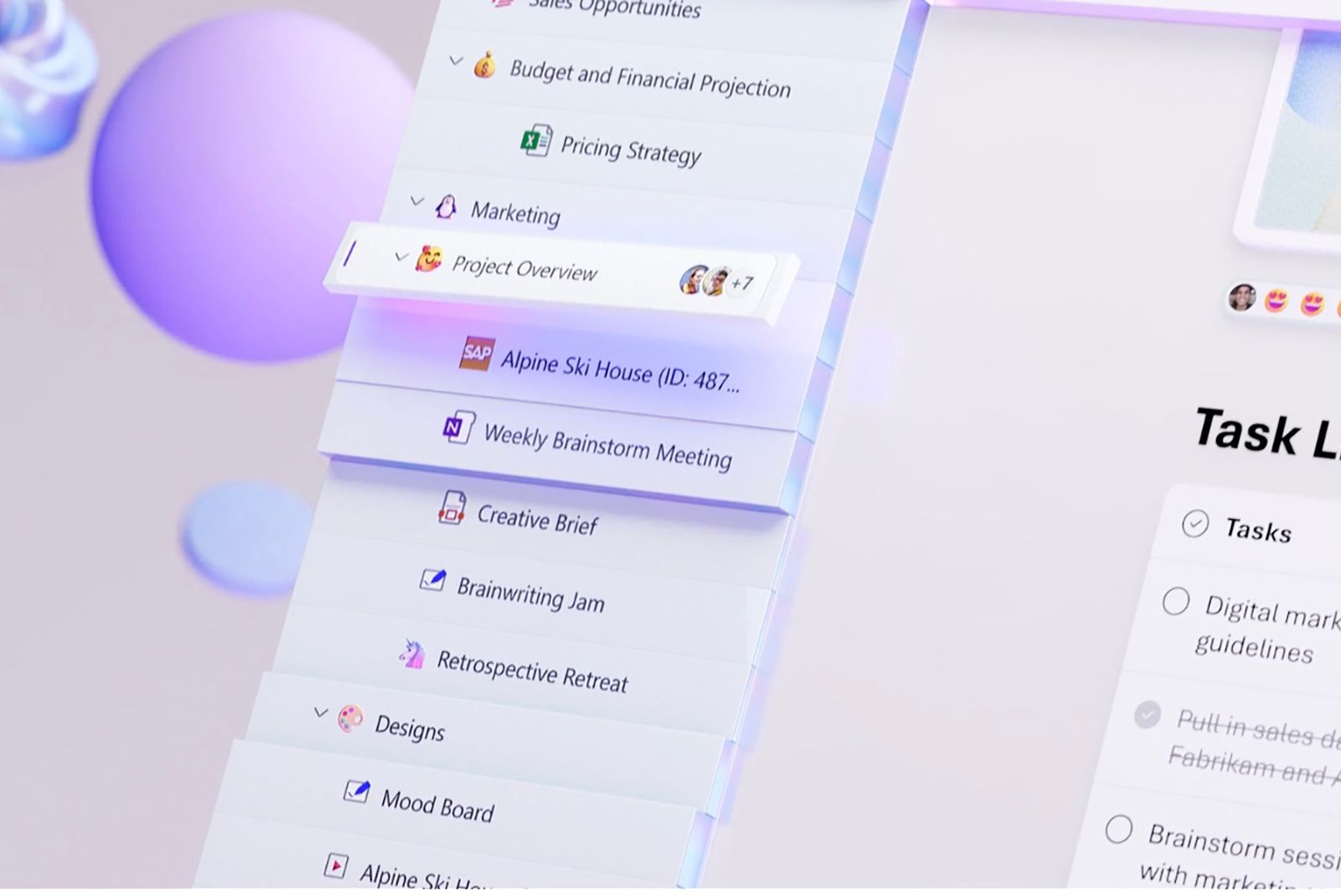Microsoft has introduced a new Office app called Loop, which is designed to provide users with a new way to collaborate on documents.
In 2019, Microsoft launched the Fluid Framework to give developers the tools to create real-time, editing-based applications. While at the Ignite conference in November 2021, Microsoft took the wraps off Loop and revealed it’s based on Fluid.
Ever since, Loop has been in a beta testing phase, where Microsoft was getting the app ready for users to start working and discovering its capabilities. Finally, after much anticipation, the platform was made available to the public on 15 November 2023. Here’s everything you need to know about Loop, the new productivity and collaboration app.
What is Microsoft Loop?
The way we work, especially in corporate and office environments, has changed drastically over the last few years. Technological advancements and the global pandemic have made office work much more remote and moved it online.
These changes have a lot of advantages over the older, more traditional model, but they also require new tools to make this kind of work more productive and much easier. If you’re working remotely, you need good management and productivity software to keep track of your work and collaborate on bigger projects with others.
Microsoft’s Loop is the answer to that need. It’s a productivity and collaboration platform that enables you to work on your projects in chunks, making each part of the process easier to handle and manage. It also makes collaboration a breeze with tools that allow you to connect with your coworkers, share parts of the project, and even add to it when sharing through other Microsoft apps.
Loop is Microsoft’s answer to platforms such as Notion that enable collaborative, project-based work. The new platform is a part of the Microsoft 365 space, so it works well with all your well-known productivity apps – Outlook, Teams, Office Suite, etc.
In other words, Loop is a digital workspace that lets you create your projects and divide them into small, portable chunks. These chunks are designed to be as interactive as possible, so you can comment on them, share them, and even dynamically transfer them into other projects. Thanks to these features, Loop is supposed to be a great platform for collaboration – especially if you and your colleagues are using other Microsoft software solutions.
Microsoft Loop is available on desktops and mobile devices. You can download it on your PC from the Microsoft Store or use it directly in your browser. There is also a mobile version for both Android and iOS.
What are the best features of Microsoft Loop?
Microsoft Loop is a productivity and collaboration app. What it means is an app that helps you create, manage, and develop your projects, work on them in smaller chunks, and collaborate with your coworkers to finish them faster, more efficiently, and ultimately deliver a better product of your work.
The main layout of Microsoft Loop is very reminiscent of one of the giants of productivity apps – Notion. When opening up Loop, you can first see your Workspaces – these are the most significant “chunks” designed to contain your whole projects, or maybe even entire groups of projects, depending on your needs.
Then, when you enter one of your workspaces, you can create Pages. These are medium-sized chunks and areas used for a single idea, project, or task. You can add to them, and they’ll grow with every addition, making them perfect both for smaller projects and huge tasks ahead of you.
Finally, the smallest chunk in Loop is called a Component. These are portable pieces of content that, when added together, create your page. You can think of them as singular paragraphs, but they are not limited to just paragraphs. When you want to add something to your project, everything – like a bullet list, a paragraph, or an image – is a different component. You can easily create them by creating a piece of content and choosing to turn them into a Component in a context menu.
It’s also worth mentioning that Loop offers many ready-made templates for you to use as your Components or whole pages. These cater to a lot of needs that businesses have when developing new projects and brainstorming ideas.
So far, all of this sounds a bit generic and is available in many other productivity apps. However, Loop has a significant ace up its sleeve, and the name of this ace is integration with other Microsoft products. What Loop brings to the table is the ability to share Loop Components not only with your collaborators within Loop but also using other Microsoft products. What’s more, this is not just sharing that sends the content of the component to another person. If you share a Loop Component in Teams, Outlook, Word, or another Microsoft platform, users there will still be able to add to it, edit it, comment on it, and start a discussion right next to that component. That’s not all – these changes will be automatically saved to the cloud and visible in all the places where the component was saved – so in both in Loop and all the other supported platforms.
There is one more exciting thing about Loop that is worth mentioning. Microsoft included its AI-powered Copilot in Loop. This AI assistant allows you to quickly create summaries of your projects, draft text, or create recaps.
Of course, aside from all of these features, you can expect to get a lot of standard formatting and linking options. Microsoft is banking on what it calls an insert menu – the ability to quickly insert components and templates by starting a command with a forward slash. Aside from that, you can create links to other Pages, Components, or Workspaces within your documents and share whole Pages or Workspaces – all the features you’d expect from productivity-focused software.
Why isn’t Loop built into Teams?
Microsoft Loop was designed as an accessory to the existing productivity software that Microsoft offers, such as Teams, Outlook, Word, Excel, etc. It is not integrated into these platforms but works as a standalone app. However, one of the biggest features of Loop is its interconnectedness with other Microsoft products.
Because Loop isn’t built into any other app, you can easily pick it up and start using the software even if you have nothing else in common with Microsoft’s Office Suite. It’s still a fully-featured productivity app and will help you get your projects in order. However, because Loop is based on the Fluid Framework developed by Microsoft, it is connected to all the other office apps that the company provides. This allows you to copy Loop pages, share them in Teams, or send them in Outlook. What’s more, these shared pages can be edited in these other apps, and all the changes show up everywhere at once, making working together on a project completely frictionless.
When will Microsoft Loop be available?
The rollout of Microsoft Loop has been a bit staggered because of all the stages the app had to go through. First, of course, there was the beta, which was later opened up, and in March 2023, the software entered a public preview phase.
Finally, after years of waiting, Loop became generally available worldwide in November 2023, with its iOS, Android, and desktop versions ready. There is also a web version of the software, but Microsoft says that this one is still in the public preview phase. It doesn’t change much – you can still freely log in and use all the available features – but you have to expect that there might be some bugs hiding here and there.
Is Microsoft Loop free to use?
Fortunately, so far, Microsoft Loop belongs to the first category, and you can try it out for free on the web, on your desktop, and on your mobile devices. You do need a Microsoft account, which is used to facilitate the integration between all the services – you don’t need an active Microsoft 365 subscription to access Loop.
You do have to remember, though, that this might change. Microsoft said that Loop will be available for free during the public preview phase, which is still going on at the time of writing for the app’s web version. So far, there is no news about the software going pay-to-use or becoming a part of the Microsoft 365 subscription, but such a phrasing from the company might be suspicious. However, the app is now free on all available platforms.
Trending Products

Cooler Master MasterBox Q300L Micro-ATX Tower with Magnetic Design Dust Filter, Transparent Acrylic Side Panel, Adjustable I/O & Fully Ventilated Airflow, Black (MCB-Q300L-KANN-S00)

ASUS TUF Gaming GT301 ZAKU II Edition ATX mid-Tower Compact case with Tempered Glass Side Panel, Honeycomb Front Panel, 120mm Aura Addressable RGB Fan, Headphone Hanger,360mm Radiator, Gundam Edition

ASUS TUF Gaming GT501 Mid-Tower Computer Case for up to EATX Motherboards with USB 3.0 Front Panel Cases GT501/GRY/WITH Handle

be quiet! Pure Base 500DX ATX Mid Tower PC case | ARGB | 3 Pre-Installed Pure Wings 2 Fans | Tempered Glass Window | Black | BGW37

ASUS ROG Strix Helios GX601 White Edition RGB Mid-Tower Computer Case for ATX/EATX Motherboards with tempered glass, aluminum frame, GPU braces, 420mm radiator support and Aura Sync


